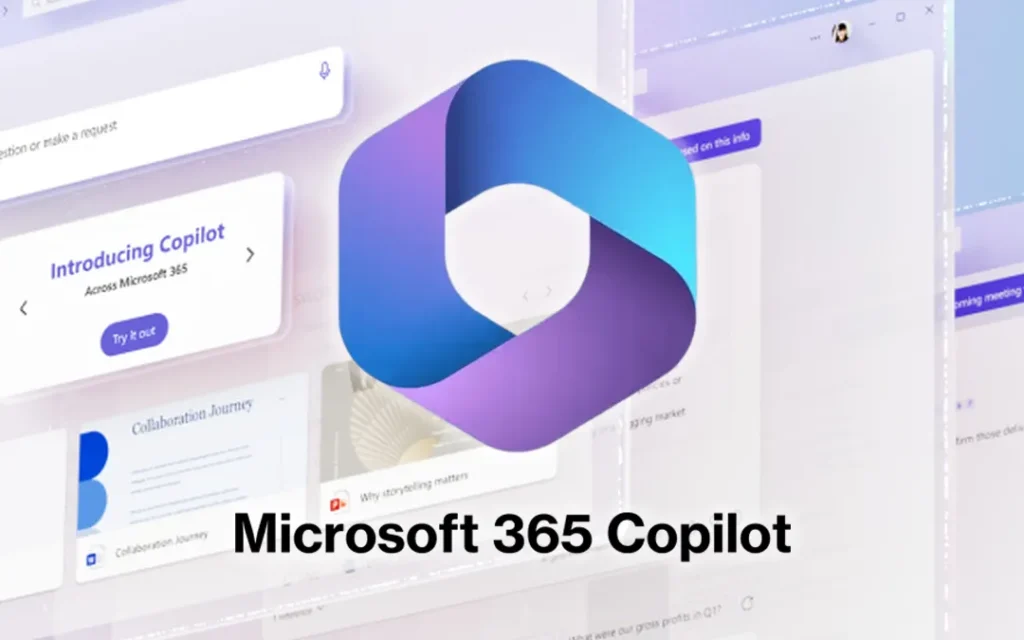Have you heard about the big changes happening with Microsoft 365? Well, it’s not just a new name; it’s now called Microsoft 365 Copilot! While that might sound exciting, some people are worried about what this means for how we use it. In this article, we’ll explore three big reasons why some users, like Simon Batt, are deciding to say goodbye to Microsoft 365. From the rise of AI tools to finding better alternatives, let’s dive into how these changes are shaking things up in the world of productivity software!
| Reason | Description | Personal Opinion |
|---|---|---|
| 1. Rebranding to Microsoft 365 Copilot | Microsoft has rebranded its Office suite to Microsoft 365 Copilot, signaling a shift in focus towards AI features. | The rebranding suggests that Copilot will be the main feature, which could confuse users. |
| 2. Dislike for AI in Productivity Suites | The author feels that AI tools like Copilot are more of a hindrance than a help, often producing clinical results. | I want to maintain control over my work and feel uneasy relying on AI. |
| 3. Availability of Free Alternatives | There are many free productivity suites that do not focus on AI, such as Google’s Docs and Sheets. | There are better options available without the AI focus, making Microsoft 365 Copilot unnecessary. |
Understanding the Microsoft 365 Rebrand
Microsoft has recently rebranded its well-known Office suite to Microsoft 365 Copilot. This change means that while you still have access to familiar programs like Word and Excel, the focus is shifting. The new branding suggests that Microsoft wants users to think of Copilot as their main tool for productivity. It shows how Microsoft is prioritizing AI technology in its software, which may change how we work with these applications.
This rebranding raises questions for many users. Why would Microsoft change such a recognized name? It seems that the company is trying to lead users toward thinking about AI as an essential part of their work process. This could mean that future updates will focus more on AI features, potentially making traditional methods less visible. For users who prefer the old way of doing things, this shift might feel uncomfortable and confusing.
Why AI Isn’t for Everyone
Many people are excited about AI, but not everyone feels the same way. While Copilot can help with tasks like creating reports, it doesn’t always get things right. Some users find that the results can feel too robotic or clinical. This means that even if Copilot does most of the work, users still have to double-check everything to avoid mistakes. For someone who likes to be hands-on with their work, this reliance on AI can feel frustrating.
Moreover, having AI create presentations or documents can leave users feeling unprepared. If a question comes up about the work, how can they answer it if they didn’t do it themselves? This concern is significant for those who want to ensure they understand every detail of their work. As Microsoft moves towards a more AI-focused approach, many users are left questioning whether they can still maintain control over their projects.
Exploring Free Alternatives to Microsoft 365
With Microsoft focusing on AI, many users are looking for alternatives that don’t require using AI tools. There are plenty of free options like Google Docs and Sheets, which offer similar features without the added AI component. These alternatives allow users to work at their own pace without feeling pressured to adapt to new technologies that they may not find helpful. This flexibility is appealing for those who value traditional productivity methods.
Additionally, some users are considering older versions of Microsoft Office that do not include AI features. Office 2024, for example, may provide a more familiar experience without the Copilot. Exploring various options can help people find the right tools that meet their needs without compromising their work style. As more people seek non-AI solutions, the market for productivity software continues to expand, making it easier to find the perfect fit.
The Shift Towards AI-Driven Workflows
The recent changes in Microsoft 365, particularly the emphasis on AI with the introduction of Copilot, signal a significant shift in how productivity tools will function moving forward. This shift is indicative of a broader trend where companies prioritize AI to enhance user efficiency. While AI can automate mundane tasks, it raises concerns about the loss of personal touch and creative control in work processes. Users accustomed to traditional methods may find it challenging to adapt, leading to frustration and a decline in productivity.
Furthermore, this AI-driven approach can create a dependency on technology, where users may feel less inclined to engage in critical thinking or problem-solving. While the promise of streamlining workflows is appealing, it could inadvertently stifle creativity and innovation. As Microsoft positions Copilot as the centerpiece of its productivity suite, users must weigh the benefits against the potential drawbacks of relying heavily on AI, questioning whether this is the direction they want their work processes to take.
Comparing Alternatives: What Can Replace Microsoft 365?
As I consider moving away from Microsoft 365, there are plenty of viable alternatives that cater to users looking for a more traditional productivity experience. Applications such as Google Workspace, LibreOffice, and Zoho offer robust tools for document creation, spreadsheets, and presentations without an AI-first approach. These platforms not only retain the core functionalities users have come to rely on but also provide a familiar interface that promotes ease of use and creativity.
Moreover, utilizing these alternatives can often lead to cost savings, as many of them offer free versions or lower subscription fees compared to Microsoft 365. For individuals and small businesses, this is an attractive option. They can maintain their productivity without sacrificing control over their work, ensuring that their outputs reflect their personal style and insights, rather than relying on AI to dictate the final product.
The Importance of User Control in Productivity Tools
In the era of increasing reliance on AI, user control over productivity tools becomes paramount. Many users value the ability to customize their work environment and ensure that their outputs genuinely reflect their thoughts and efforts. The apprehension surrounding AI-generated content stems from concerns about authenticity and accuracy, which can be compromised when machines take over creative processes. By prioritizing tools that allow for greater user engagement, individuals can maintain a sense of ownership over their work.
Additionally, having control over the tools they use fosters a deeper understanding of their content. This is especially important in professional settings where knowledge of one’s material can make the difference in discussions and presentations. As I search for alternatives to Microsoft 365, I am keen on solutions that enhance my productivity without sidelining my input, ensuring that every document I create is a true reflection of my skills and knowledge.
Future Trends in Productivity Software
As we look ahead, it’s essential to consider how productivity software will evolve. With the current trend leaning heavily towards AI integration, it is likely that future applications will continue to prioritize automation and machine learning capabilities. This could lead to a landscape where traditional productivity tools are overshadowed by AI-centric platforms, causing users who prefer hands-on control to seek out niche alternatives that meet their needs.
Nonetheless, there is a growing movement advocating for balance, where technology enhances rather than replaces human creativity. Users are starting to demand more transparency and customization in their software, prompting developers to create hybrid models that incorporate AI features while allowing for user control. This evolution could redefine how we interact with productivity tools, leading to a more user-centric approach that respects the nuances of human creativity and decision-making.
Frequently Asked Questions
What is Microsoft 365 Copilot and why is it different from Office?
**Microsoft 365 Copilot** is the new name for what was once called **Office**. It includes applications like Word and Excel but focuses more on using **artificial intelligence** (AI) to help users.
Why did Microsoft change the name from Office to Microsoft 365 Copilot?
Microsoft changed the name to highlight its focus on **AI features**. They want users to think of **Copilot** as a helpful assistant when they need to get work done, instead of just using traditional Office tools.
What are the new features of Microsoft 365 Copilot?
The new features include **AI tools** that help create reports and presentations. However, some users feel that these tools can sometimes be **incorrect** or not very personal, making them less useful.
What concerns do people have about using AI in Microsoft 365 Copilot?
Many people worry that relying on **AI** can lead to mistakes. They want to control their work and ensure everything is correct, rather than letting AI do it all without oversight.
What alternatives exist to Microsoft 365 Copilot?
There are many free alternatives like **Google Docs** and **Sheets** that don’t focus on AI. Users can also consider using older versions, like Office 2024, which doesn’t include Copilot.
What does it mean to have a ‘Copilot first’ application?
A ‘Copilot first’ application means that the focus is on using **Copilot** to assist with tasks instead of using traditional methods. This may change how users interact with their tools.
Why might someone cancel their Microsoft 365 subscription?
Someone might cancel their subscription if they prefer not to use AI for their work or if they find other tools that suit their needs better without the AI focus.
Summary
The content discusses the recent rebranding of Microsoft Office to “Microsoft 365 Copilot,” indicating a significant shift in focus towards AI integration. The author expresses concern that this change prioritizes AI tools over traditional productivity, suggesting a shift from user control to AI-assisted tasks. They highlight that while Copilot can simplify tasks, it may lead to less personalized results, creating unease about AI’s role in productivity. Additionally, the author considers exploring free alternatives to Microsoft 365 that do not emphasize AI, suggesting a preference for maintaining personal oversight in their work processes.








